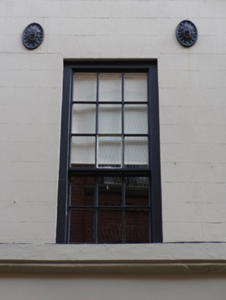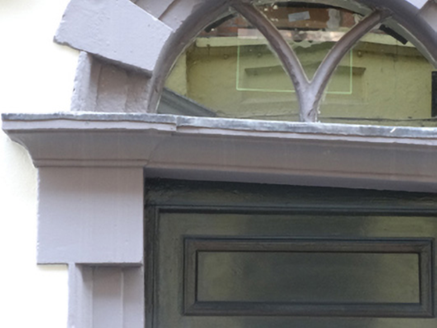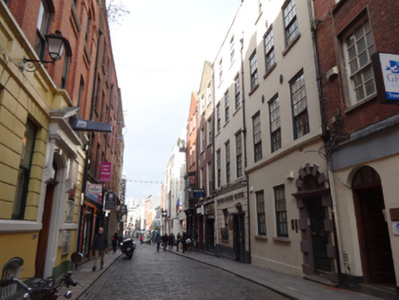Survey Data
Reg No
50020120
Rating
Regional
Categories of Special Interest
Architectural, Artistic, Historical, Social
Previous Name
J.D. Williams & Co., Woollen Merchants
Original Use
House
Historical Use
Shop/retail outlet
In Use As
Office
Date
1710 - 1730
Coordinates
315626, 234090
Date Recorded
17/02/2015
Date Updated
--/--/--
Description
Terraced three-bay four-storey former house, built c.1720, having single-bay four-storey return to rear (east) elevation. Now in use as offices and self catering accommodation. Cruciform-plan slate roof, with brick chimneystack, rendered parapet wall with dressed granite coping, and cast-iron rainwater goods. Pitched roof to rendered return. Rendered wall to front (west) elevation, having rendered plinth course and cast-iron tie bolts. Square-headed window openings, with granite sills, six-over-six pane timber sliding sash windows to ground and second floors, nine-over-nine pane to first floor and four-over-four pane to third floor windows, all with exposed sash boxes, having two centrally placed windows to third floor. Masonry sill course to first floor. Round-headed door opening with granite Gibbsian surround, recent timber-panelled door and original tripartite fanlight with timber glazing bars, and granite step. Retaining eighteenth-century interior, with closed string staircase, timber panelling, timber cornices, bolection mouldings and lugged-and-kneed door surrounds. Granite paving and kerb stones to front site.
Appraisal
This former house is an excellent examples of Dublin's early eighteenth-century domestic architecture. Suggestions of its formerly gable-fronted form are found in the cruciform roof structure and the centrally-located third floor windows. This architectural form became fashionable in the late-seventeenth century, though its popularity declined and buildings were altered to confirm with later Georgian tastes. Exposed window sash boxes, a projecting string course, eyecatching Gibbsian doorcase and historic fanlight are noteworthy early features. The early-Georgian interior retains a cohesiveness and integrity which is now rare in Dublin. By 1830 it housed J.D. Williams & Co, Woollen Merchants, and was later the workplace of Standish O'Grady, whom Yeats named 'the Father of the Irish Revival', in the 1870s. It was during his tenure at No.25 that he wrote, 'O'Grady's History of Ireland'.













































